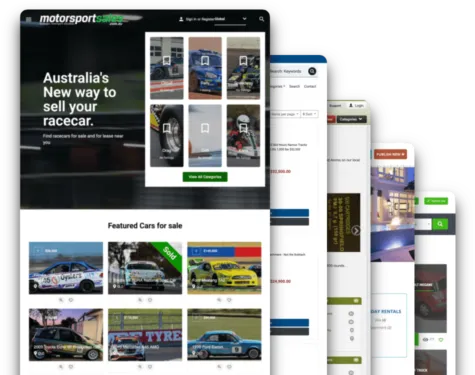Successfully onboarding new users is the foundation for the growth and success of any marketplace.
Without a clear strategy, you risk losing potential buyers and sellers before they even get started.

This comprehensive guide covers the essential strategies to ensure your users transition smoothly from sign-up to active engagement.
Understanding the Importance of Onboarding
User onboarding is more than just a welcome process; it’s the first impression of your marketplace.
Done right, it fosters loyalty, reduces churn, and accelerates user activity.
Why Onboarding Matters
- Retention: Proper onboarding boosts user retention rates by up to 50%. (Source: Wyzowl)
- Engagement: Engaged users are 4 times more likely to recommend your platform. (Source: Nielson Norman Group)
- Revenue Impact: Active and satisfied users generate higher lifetime value for the platform.
Challenges
- User Drop-off During Registration: Users abandon platforms with lengthy or confusing registration processes.
- Information Overload: Bombarding users with too much information initially can lead to frustration.
- Undefined User Journey: Lack of a clear roadmap may confuse and alienate new users.
Solutions
- Streamline the registration process.
- Focus on a "learn as you go" approach.
- Provide clear, personalized guidance.

Strategies to Streamline Registration
The registration process sets the tone for the user experience. Simplifying this step is critical to reducing drop-offs.
Best Practices for Registration
- Minimal Input Fields: Request only essential details upfront.
- Social Logins: Offer Google, Facebook, or Apple sign-in options.
- Progress Indicators: Use visual cues to show completion status.
- Mobile Optimization: Ensure the process is seamless on mobile devices.
Case Study: Airbnb
Airbnb optimized its registration by integrating social logins and eliminating redundant fields. This resulted in a 15% increase in sign-ups within six months. (Source: Airbnb Blog)

Educating Users with Interactive Tutorials
New users often feel overwhelmed when navigating a marketplace for the first time. Interactive tutorials can bridge the knowledge gap.
Interactive Onboarding Tools
- Guided Tours: Walk users through key features with pop-ups or tooltips.
- Video Tutorials: Short, engaging videos can explain complex functionalities.
- Gamification: Use badges or rewards to encourage exploration.
Example: Etsy
Etsy's onboarding process includes a step-by-step guide for sellers to set up their shop, ensuring they feel confident and supported.
Personalization: Tailoring Experiences to User Needs
Not all users have the same expectations or goals. Personalization ensures a user-centric experience.
How to Personalize Onboarding
- User Segmentation: Categorize users (e.g., buyers vs. sellers) and provide tailored instructions.
- AI-Powered Suggestions: Recommend products, sellers, or features based on user behavior.
- Localized Content: Adapt language, currency, and recommendations based on user location.
Real-Life Example: Amazon
Amazon uses AI to suggest products, offering a highly personalized shopping experience that keeps users engaged.
Building a Supportive Community
A thriving community can enhance user retention by creating a sense of belonging.
Community-Driven Tactics
- Forums and Groups: Allow users to connect and share tips.
- Peer Reviews: Encourage feedback to establish trust.
- Ambassador Programs: Engage veteran users to mentor newcomers.
Data Point
Communities improve user retention by 30%, as engaged users are more likely to return. (Source: Vanilla Forums)
Example: Facebook Marketplace
Facebook Marketplace leverages its existing community to ensure a built-in trust factor, boosting both buyer and seller confidence.
Providing Continuous Support
Even after onboarding, support plays a critical role in retaining users.
Effective Support Channels
- Chatbots: Provide instant answers to common queries.
- Knowledge Bases: Create FAQ sections with tutorials and troubleshooting guides.
- Live Support: Offer human assistance for complex issues.
Data Point
94% of users are more likely to stick with a marketplace offering excellent customer support. (Source: Zendesk)
Measuring Onboarding Success
Tracking and refining your onboarding process ensures continuous improvement.
Key Metrics
- Time to First Transaction: Measure how long it takes users to complete their first purchase or sale.
- Drop-off Rate: Identify where users abandon the onboarding process.
- Net Promoter Score (NPS): Gauge user satisfaction and likelihood of recommendations.
Tools to Use
- Google Analytics: Track user behavior.
- Mixpanel: Analyze drop-offs and engagement.
- Hotjar: Visualize user interactions with heatmaps.
Innovations and Evolving Strategies
The marketplace landscape is ever-changing, with new technologies shaping onboarding strategies.
Future Trends
- AI-Driven Onboarding: AI will provide hyper-personalized user experiences.
- Voice-Activated Assistance: Voice commands will simplify navigation and onboarding.
- Blockchain for Trust: Blockchain can enhance transparency, boosting trust in the marketplace.
Prediction
By 2030, marketplaces integrating AI and blockchain in their onboarding processes will see up to 70% higher user retention rates. (Source: Gartner)
Effective onboarding strategies are the backbone of any successful marketplace.
From simplifying registration to providing continuous support, each step plays a vital role in ensuring user satisfaction.
By staying ahead of trends and incorporating innovative solutions, marketplaces can achieve long-term success.
Looking to Create a Marketplace? Contact Us at Yclas for expert solutions to build and grow your online marketplace.

